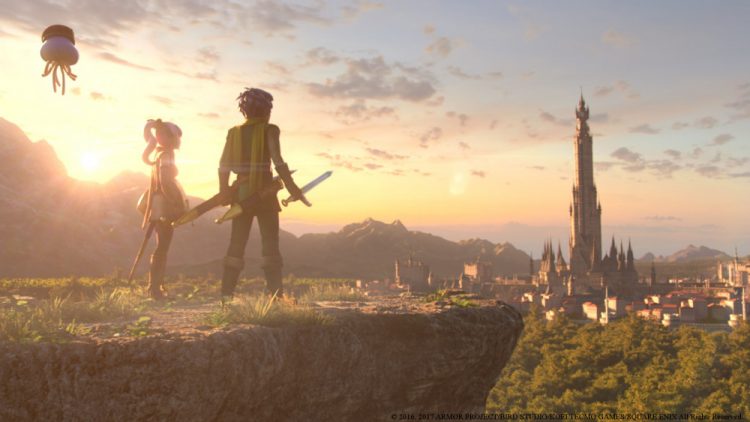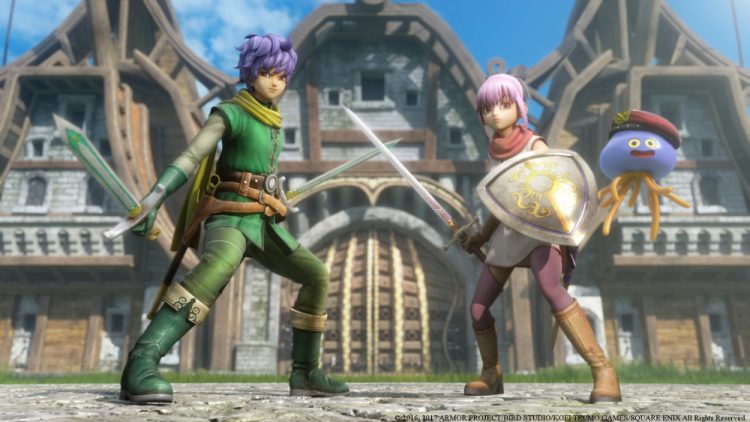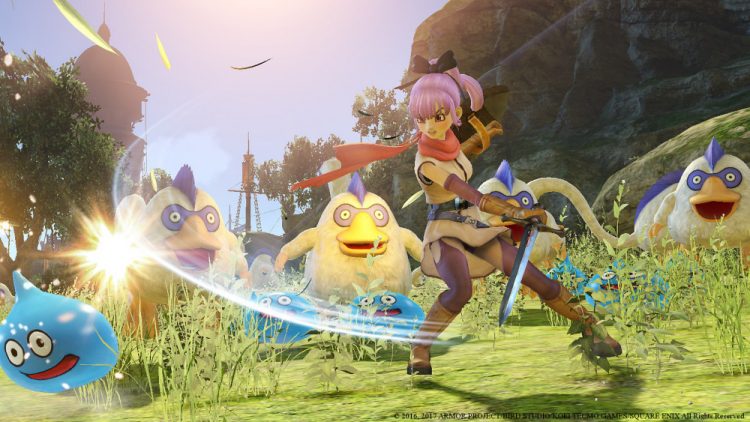With Dragon Quest Heroes II, you’re presented with a visually stunning hack n’ slash JRPG developed by the same team behind Dynasty Warriors. With a strong pedigree and incredible sales figures in Japan (this was a launch title for the Nintendo Switch over there), Dragon Quest Heroes II is my first experience of the series – and definitely an interesting take on a tired formula.
Game Name: Dragon Quest Heroes 2
Platform(s): PlayStation 4, PC, PlayStation Vita
Publisher(s): Square Enix
Developer(s): Omega Force
Release Date: April 28, 2017
Dragon Quest Heroes hit the shelves in 2015 and was met with widespread critical acclaim. The series has been running strong for over 30 years now, celebrating its 30th anniversary of the NES original (back when it was a full-scale RPG and not a hack n’ slash hybrid). Coming into this, I hadn’t played any of the games’ predecessors but I was fully aware of their existence, which is fairly good going for a franchise which I feel targets itself at a younger demographic. Playing through the entirety of this sequel with no prior knowledge meant I was forever playing catch-up – however I relished the challenge, particularly when I knew Omega Force were behind the wheel.
As a younger gamer I was an avid fan of the Dynasty Warriors franchise. It was the first game of its kind to truly perfect the art of addictive combat, allowing you to mow through hundreds upon hundreds of enemies with one slash of your pointy spear. It’s certainly dated now – but Dragon Quest Heroes II does a good job of picking up the gauntlet and running full-stretch across a gorgeous green field with it. Combining those iconic hack n’ slash elements with more traditional RPG gameplay – the result is an interesting one. It feels less a traditional JRPG and more an Overwatch/Final Fantasy/Breath of the Wild/Dynasty Warriors hybrid – which is high praise indeed.
Narratively the game isn’t up to much – however it’s aided by some good voiceover work, stunning presentation and bolstered by the sheer fact that its target audience won’t really be going in for anything too divergent. It’s a classic ‘war ravages a peaceful kingdom’ story – where a band of unlikely heroes must rally together to save the day. The story rarely engaged me, yet the attempts at humor and seamless English translation made it a relaxing playthrough.
The characters are distinctive, vibrant, but not entirely memorable – your sidekick Healix is played very young through his/her voice actor but still fulfils a highly important role in the game (like a childish Navi, if you will). The game mainly revolves around two cousins, Lazarel and Teresa who you’ll play as from the get-go (you pick one, the other becomes your partner). They’re exciting enough, but the game features a 4-character party system – akin to the tropes of traditional JRPG’s – which makes character relationships and dynamics far more interesting.
The game pitches you in a semi-open world for you to explore to your hearts content. I was surprised at the design of the towns, fields and marshes – after coming off the back of Breath of the Wild, I didn’t expect to experience a sandbox game dazzling with even more color, more vivid locations and better enemy design than the Game of the Year touted Zelda entry. I’m not sure if this is due to the fact Zelda needed to appeal to a wider audience than just children, therefore pitched itself in a slightly darker aesthetic space to Dragon Quest Heroes, or maybe Omega Force simply know how to execute a good game. I’d definitely describe the monster designs as being ‘cutesy’, rounded off – simple, chubby, fun to slash through. It does mean however that the more intimidating enemies still look friendly and cuddly, rather than menacing and vicious – which probably isn’t good news for the thrillseekers out there.
The game sports a hatful of engaging and rewarding features, from the recently included 4-player co-op multiplayer (which I couldn’t really get into due to the fact the game’s campaign is almost 35 hours long and if I wanted to play Overwatch, I’d just play Overwatch) right through to side quests, which allow you to build up your skills within the skill-tree menu system. You begin as a Warrior, however you can change your classes later on in the game – the mage seems to be a fan favorite as they opt for long-range attacks, keeping you safer from a distance. The franchises iconic ‘monster medals’ return here, allowing you to not only summon an NPC monster to help fight by your side (or soak up enemy damage) but to actually transform into one too – using their outrageous abilities to cause utter devastation on your opponents.
Dragon Quest Warriors II isn’t normally a game I’d look twice at in a store, particularly in such a saturated market, however it’s taken me by complete surprise. The execution is fresh and engrossing; the hack n’ slash combat is as fun as you can imagine, paired with some of the best elements from games like Overwatch and Final Fantasy. The game really pushes the boundaries of the traditional JRPG formula and by bundling a multiplayer mode alongside an already hefty campaign, Omega Force are clearly aiming for longevity. Value for money? Definitely.
Not meant for me - but that didn't stop me enjoying it!
Probably not meant for me – but that didn’t stop me enjoying it!
All in all, the game is a romping success. It definitely plays to the younger gamer, yet still retains enough humor and sense of adventure to keep the older gamers interested. I’m not sure if it does quite enough to hold your interest throughout the 35-hour campaign, but to me it’s a refreshing take on a tired formula. It’s as much a JRPG as it is a sandbox action game; I can hand-on-heart say I really enjoyed my time in the Dragon Quest kingdom.
-
Not meant for me - but that didn't stop me enjoying it!





